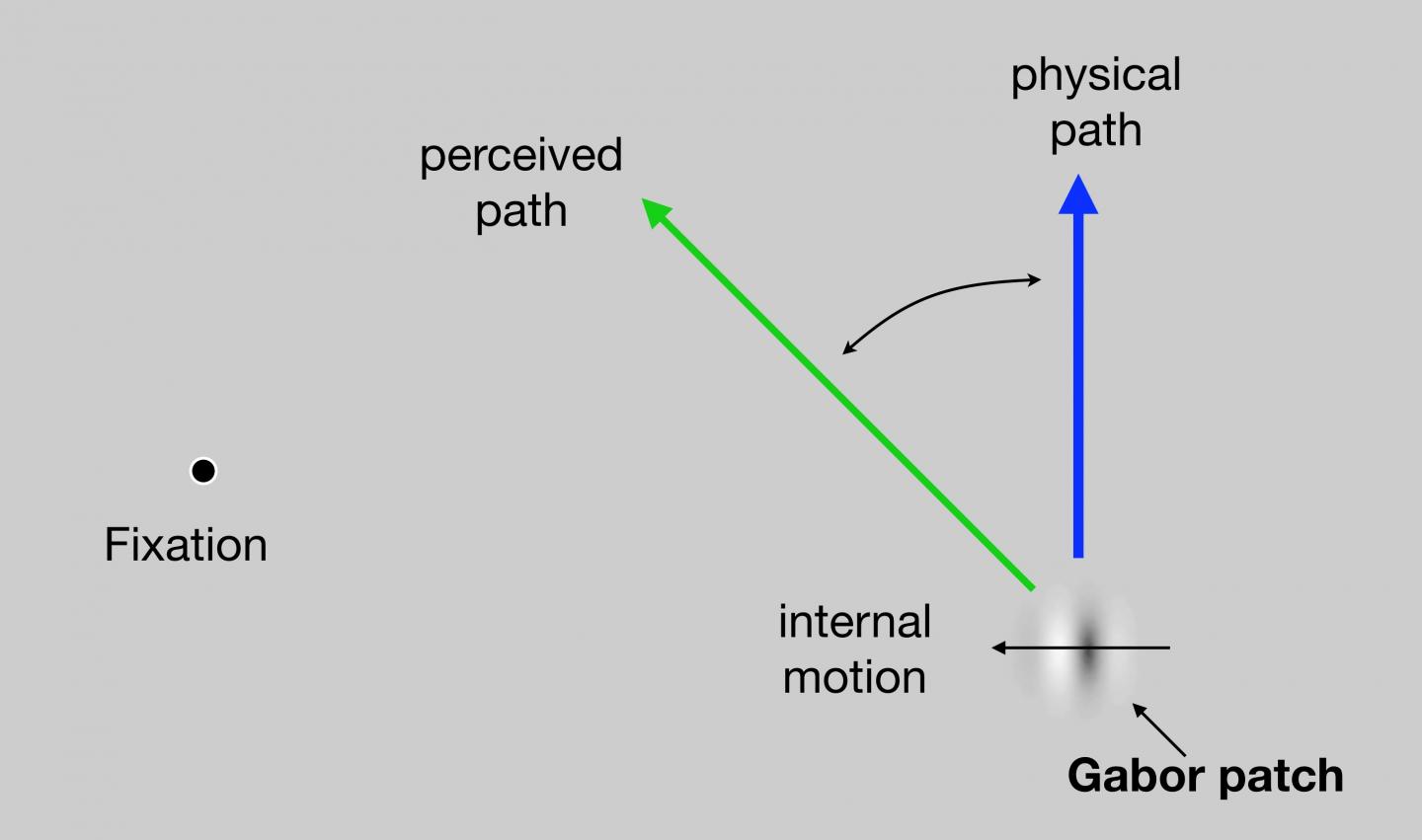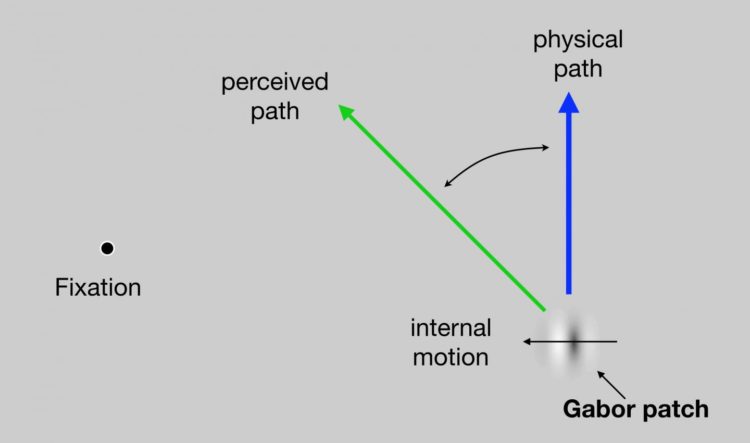
Credit: Figure by Sirui Liu and Patrick Cavanagh.
A Dartmouth study finds that the conscious perception of visual location occurs in the frontal lobes of the brain, rather than in the visual system in the back of the brain. The findings are published in Current Biology.
The results are significant given the ongoing debate among neuroscientists on what consciousness is and where it happens in the brain.
“Our study provides clear evidence that the visual system is not representing what we see but is representing the physical world,” said lead author, Sirui Liu, a graduate student of psychological and brain sciences at Dartmouth. “What we see emerges later in the processing hierarchy, in the frontal areas of the brain that are not usually associated with visual processing.”
To examine how the perception of position occurs in the brain, participants were presented with visual stimuli and asked to complete a series of behavioral tasks while in a functional magnetic resonance imaging (fMRI) scanner. For one of the tasks, participants were asked to stare at a fixed black dot on the left side of the computer screen inside the scanner while a dot that flickered between black and white, known as a Gabor patch, moved in the periphery. Participants were asked to identify the direction the patch was moving. (Click here (https:/
Using fMRI data and multivariate pattern analysis, a method for studying neural activation patterns, the team investigated where the perceived path, tilted left or right from vertical, appears in the brain. They wanted to determine where conscious perception emerges and how the brain codes this. On average, participants reported that the perceived motion path was different from the actual path by 45 degrees or more. The researchers found that while the visual system collects the data, the switch between coding the physical path and coding the perceived path (illusory path) takes place outside of the visual cortex all the way in the frontal areas, which are higher-order brain regions.
“Our data firmly support that frontal areas are critical to the emergence of conscious perception,” explained study co-author and co-principal investigator, Patrick Cavanagh, a research professor of psychological and brain sciences at Dartmouth, and senior research fellow and adjunct professor of psychology at Glendon College. “While previous research has long established the frontal lobes are responsible for functions such as decision-making and thinking, our findings suggest that this area of the brain is also the end step for perceiving where objects are. So, that’s kind of radical,” he added.
###
Cavanagh is available for comment at: [email protected].
In addition to Liu and Cavanagh, Qing Yu, a research scientist at the University of Wisconsin-Madison, who was a graduate student at Dartmouth at the time of the study, and Peter Tse, co-principal investigator and a professor of psychological and brain sciences at Dartmouth, also served as co-authors of the study.
FULL CAPTION: The areas of the brain showing common representation of the perceived motion path are given an orange, green, or red overlay (here combining both experiments of the article). The visual cortex is within the red dashed outlines where little or no activity is seen. The most active areas are in the frontal lobes. The method used to identify the areas that code for the common perceptual path is called cross-classification. A mathematical function is found that discriminates the left tilted from right tilted physical paths and then it is used to discriminate the left from right illusory paths (and vice versa). Only areas that share a common representation of the perceptual path will show significant cross-classification.
Media Contact
Amy D. Olson
[email protected]
603-646-3274
Original Source
https:/





